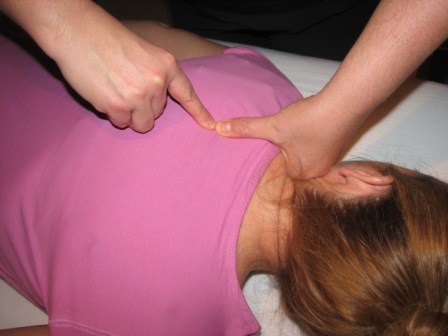how does bowenwork work?
there are many theories about the physiological mechanisms by which bowenwork brings about the results for which it is famous. in addition to the rebalancing of the ANS, autonomic nervous system, bowenwork moves and procedures may reset the body to heal itself by activating, through the nervous and endocrine systems among others, the following mechanisms:
- stretch reflex: most moves are done either at the origin, insertion or belly of muscles where receptors are located, informing the nervous system on the state of tension, length or stretch in the musculotendinous tissue. these receptors are stimulated during the ‘challenge’ and the ‘rolling’ part of the move, which changes the stimulus received by the nervous system. this can change a pain/muscle spasm loop.
- joint proprioceptors: all moves done around a joint directly affect the joint capsule and ligaments that are richly innervated with proprioceptors. here again, stimulus will be received by the nervous system, inviting normalization of the joint function without the need for forceful manipulation.
- fascia: each bowenwork move is done at the level of the superficial fascia and affects the relationship between the fascia and the nerve, muscle or tendon being mobilized. fascia plays a major role in muscle co-ordination, postural alignment and overall structural and functional integrity. all of these are negatively affected when the fascia stiffens, contracts, torques or dehydrates. following a bowenwork session it is not uncommon to see adhesions loosen up, scar tissue soften and posture and mobility improve without harsh mobilizations or stretching.
- segmental viscerosomatic spinal reflexes: several bowenwork moves engage these reflexes. they produce referred reactions to the internal organs through stimulation of the skin, muscles and nerves.
- acupuncture points and meridians: most moves overlap acupuncture points and some actually cross two or three acupuncture meridians at once. acupuncturists have correlated the indications and effects of bowenwork moves with the corresponding acupuncture points. they have also commented on the immediate changes of the acupuncture pulses in response to moves or procedures. the overlap of these two systems could explain the very strong vibrational component of the technique and its effect on the internal organs.
- harmonic vibration or resonance model: bowenwork moves set up vibrational patterns which bring the body back into balance and harmony.
- lymphatics: some bowenwork procedures activate draining of the lymphatic system, stimulating the immune system.
- detoxification is often initiated during a session, thereby improving the body’s ability to function at a cellular level.
what can you use bowenwork for?
bowenwork can be beneficial in a wide range of situations. it can assist recovery from many conditions, from traumatic injury to chronic illness, depending upon each individual’s capacity to heal. many clients report that bowenwork is THE most relaxing modality they have ever experienced.
some of the conditions that often respond favorably to bowenwork are:
· back pain and sciatica
· digestive and bowel problems
· earache and TMJ problems
· migraines and other types of headaches
· fibromyalgia and chronic fatigue syndrome
· hip, knee, ankle and foot problems
· menstrual and hormonal irregularities
· neck, shoulder (including frozen shoulder), elbow and wrist problems
· groin pain, pelvic tilt and uneven leg length
· respiratory problems and hay fever
· repetitive strain injury, carpal tunnel syndrome and tennis elbow
· sports and other traumatic injuries
· pelvic, low back or sciatic pain during pregnancy
· colic, feeding problems, asthma symptoms, or unsettled or distressed babies and children (including neonates and infants as well as older children)
· regular tune ups, stress relief, anxiety, sleeplessness and for relaxation
if there is something you can think of that isn't on the list above, please don't hesitate to ask. i will be happy to let you know in my professional opinion if i think bowenwork will be able to help.
read here if you missed part 1 - what is bowenwork
read the rest of the series:
part 3 - converting my massage practice into all bowenwork practice
part 4 - sessions, what to expect, other details
image credit, credit


No comments:
Post a Comment